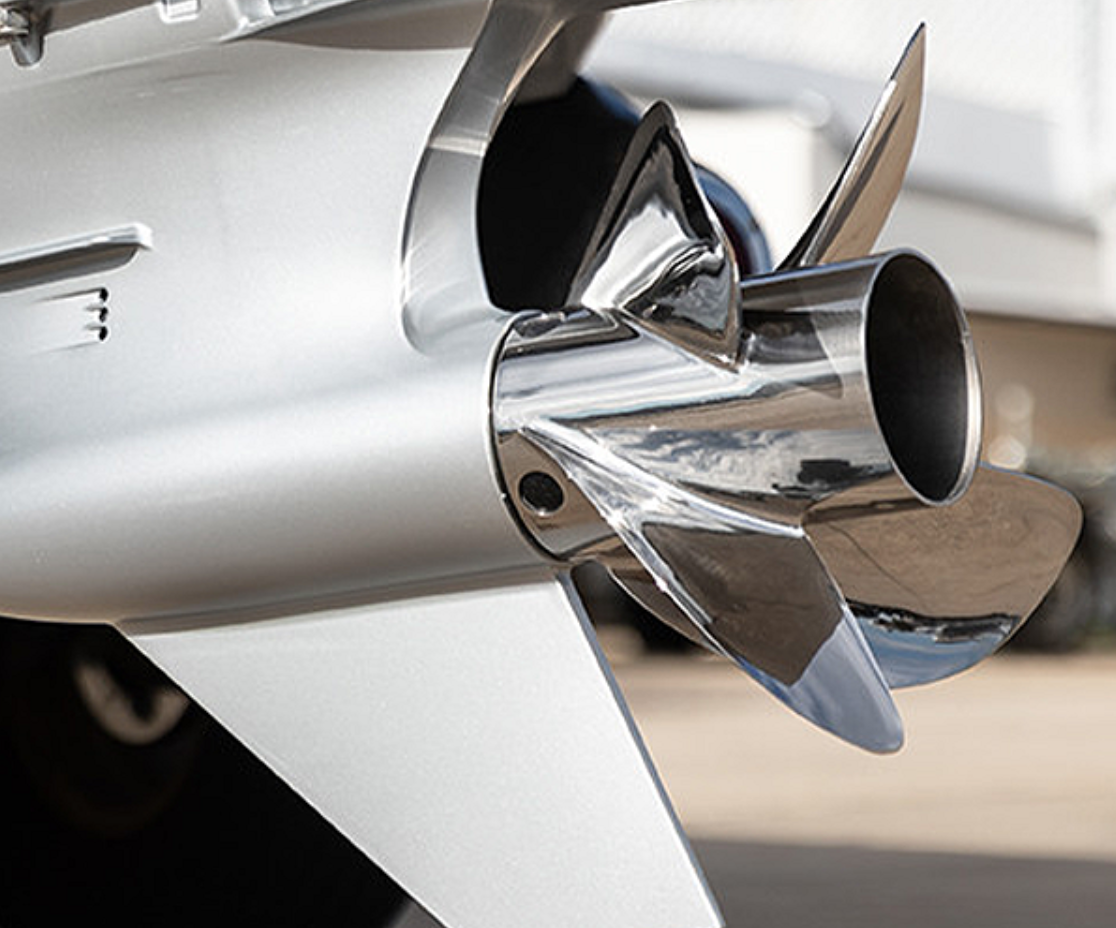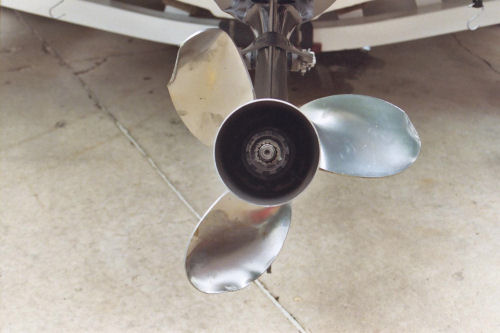Propeller Ventilation and Cavitation: Know the Difference

By Thomas P—e-ribbing.com
Ventilation and Cavitation are two different phenomena that are observed under specific conditions during the rotation of the propeller and understanding the difference between the two is critical. One thing is true for both conditions. Cavitation and ventilation of a propeller (except in certain special cases) have a negative impact on the performance of a boat.
Ventilation is the result of the entrance of air or exhaust gases (they are drawn into propeller blades) between and around the propeller blades. This leads to a sudden reduction of water load on the blades, an increase in engine rpm and the loss of the propeller’s grip on the water.

Propeller Ventilation Can be Caused by:
- High engine mountings
- Excessive engine trim
- Sharp turns
- Lower-unit imperfections (nicks or scratches) that restrict water flow to the propeller
- Bad position of trim tabs or transducers
- Hull imperfections that disturb water flow to the propeller
In most cases, propeller ventilation should be avoided because it leads to loss of thrust. To reduce the effect of ventilation, we should keep the lower-unit housing and our hull in good condition, not mount our engine too high and use propellers with relatively high rake angles.
Cavitation, unlike Ventilation, is a more complex phenomenon due to low pressure and can cause severe damage.
It is known that water boils at 212° F (100° C). However, what many people don’t know is that water can also begin to boil at room temperature when atmospheric pressure decreases significantly.

When a propeller rotates at high speed, pressure on the back side of its blades is reduced. If the pressure falls below a certain value, the water begins to boil, resulting in formation of vapor cavities (bubbles) near the leading edge of the blades.
As the bubbles migrate towards the center of the blades, where the pressure is higher, they start to implode and ultimately cause repeated explosions, sometimes so violent that can lead to fatigue of the metal surface and to considerable wear of the blades.
Cavitation Leads to:
- Loss of thrust and speed
- Noise and vibration
- Erosion of the blades
Keeping a propeller in excellent condition can limit cavitation. We need to know that one of the most common causes leading to cavitation is when a propeller’s blade edges or tips are bent or missing.